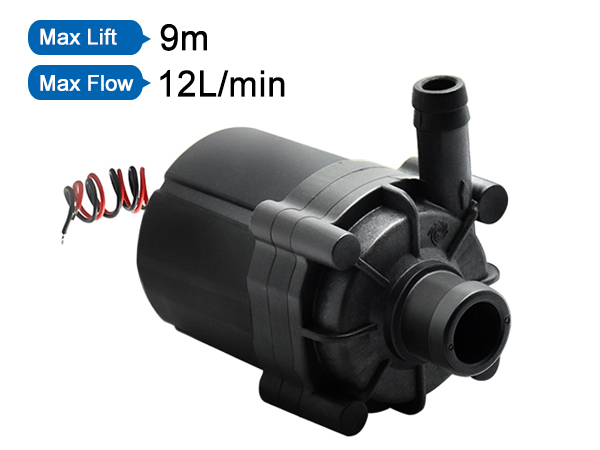What is jet deep well pump?
Published:2020-12-30
Jet deep well pumps are specialized systems designed to extract water from depths up to 30 meters using a combination of jet pumps and centrifugal pumps. This guide explores their working principle, configurations, and applications, optimized for engineers and agricultural professionals.

1. What is a Jet Deep Well Pump?
A jet deep well pump integrates a jet pump and centrifugal pump to create a vacuum that lifts water from deep wells. Key components include:
- Jet Pump: Creates high-velocity water jets to induce suction.
- Centrifugal Pump: Provides the initial pressure for the jet system.
- Diffuser: Converts kinetic energy to pressure energy for efficient discharge.
2. Working Principle Explained
- Jet Formation: The centrifugal pump sends pressurized water through a nozzle, creating high-speed jets.
- Vacuum Creation: Jets remove air from the suction pipe, forming a vacuum that draws well water into the system.
- Energy Exchange: Well water mixes with jet water in the throat, exchanging energy.
- Pressure Conversion: The diffuser converts kinetic energy to pressure, discharging water at high pressure.
3. Types of Jet Deep Well Pump Configurations
3.1 Parallel Configuration
- Setup: Jet pump and centrifugal pump operate in parallel.
- Function:
Centrifugal pump supplies pressurized water to the jet pump.
Jet pump lifts water from the well and mixes it with the supply water.
- Applications:
Surface irrigation (e.g., 1.5 hp models for small farms).
Channel dredging.
3.2 Series-Parallel Configuration
- Setup: Jet pump boosts the centrifugal pump’s suction.
- Function:
Part of the centrifugal pump’s output powers the jet pump.
Remaining water is delivered to pressure tanks or pipelines.
- Applications:
Sprinkler irrigation (1 hp models for large fields).
Agricultural and livestock water supply.
4. Advantages vs. Submersible/Deep-Well Pumps
| Feature | Jet Deep Well Pump | Submersible/Deep-Well Pump |
| Efficiency | Lower (60-70%) | Higher (75-85%) |
| Cost | Low manufacturing/maintenance | Higher |
| Installation | Simple (no need for underground setup) | Complex |
| Lifespan | 8-10 years (with proper maintenance) | 10-15 years |
5. Key Performance Parameters
- Max Lift: 9 meters (ideal for wells ≤30m depth).
- Max Flow: 12 L/min (adjustable via pump size selection).
- Power Options: 1/2 hp, 1 hp, 1.5 hp (see Jet Deep Well Pump 1.5 HP Guide).
6. Installation and Maintenance Tips
- Step 1: Install the pump near the wellhead for easy access.
- Step 2: Prime the pump with water to initiate the vacuum.
- Step 3: Regularly inspect the seals and bearings for wear.
- Pro Tip: Pair with a pressure tank (Deep Well Jet Pump with Pressure Tank Guide) for consistent water supply.
7. Why Choose a Jet Deep Well Pump?
- Cost-Effective: 30% cheaper than submersible pumps for similar applications.
- Low Maintenance: Fewer moving parts reduce downtime.
- Versatile: Works with both shallow and deep wells.
- Optimization Strategies for Google Rankings
- Distribution in Water Heater Mattresses: Why BLDC Pumps Ensure Uniform Heating
- How BLDC Pumps Ensure Precise Flow in Water Dispensers
- Why BLDC Pumps Are Essential for Smart Toilets
- The Critical Role of Automotive Electronic Water Pumps in New Energy Vehicle Battery Thermal Management
- Noise Control Technology for Smart Toilet Water Pumps: Enhancing Quiet Operation in Modern Bathrooms
- Unveiling the Working Principle of Automotive Electronic Water Valves
- Comparative Analysis of Liquid-Cooled Pumps vs. Air-Cooled Systems for EV Charging Stations
- Technical Application of Brushless DC Motors in Energy Storage Circulation Pumps
- Water Heater Pump: Efficiency Upgrade for Low-Voltage Systems
- How Dishwasher Water Pumps Enhance Cleaning Coverage Through Stable Operation?
